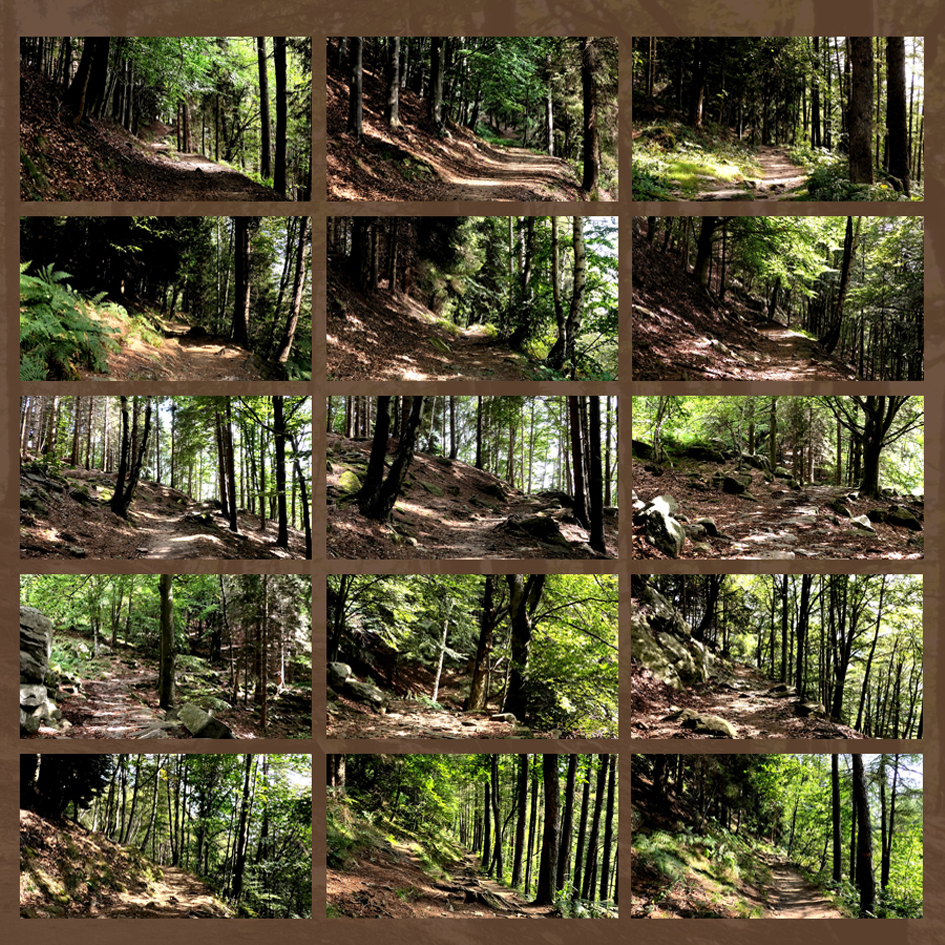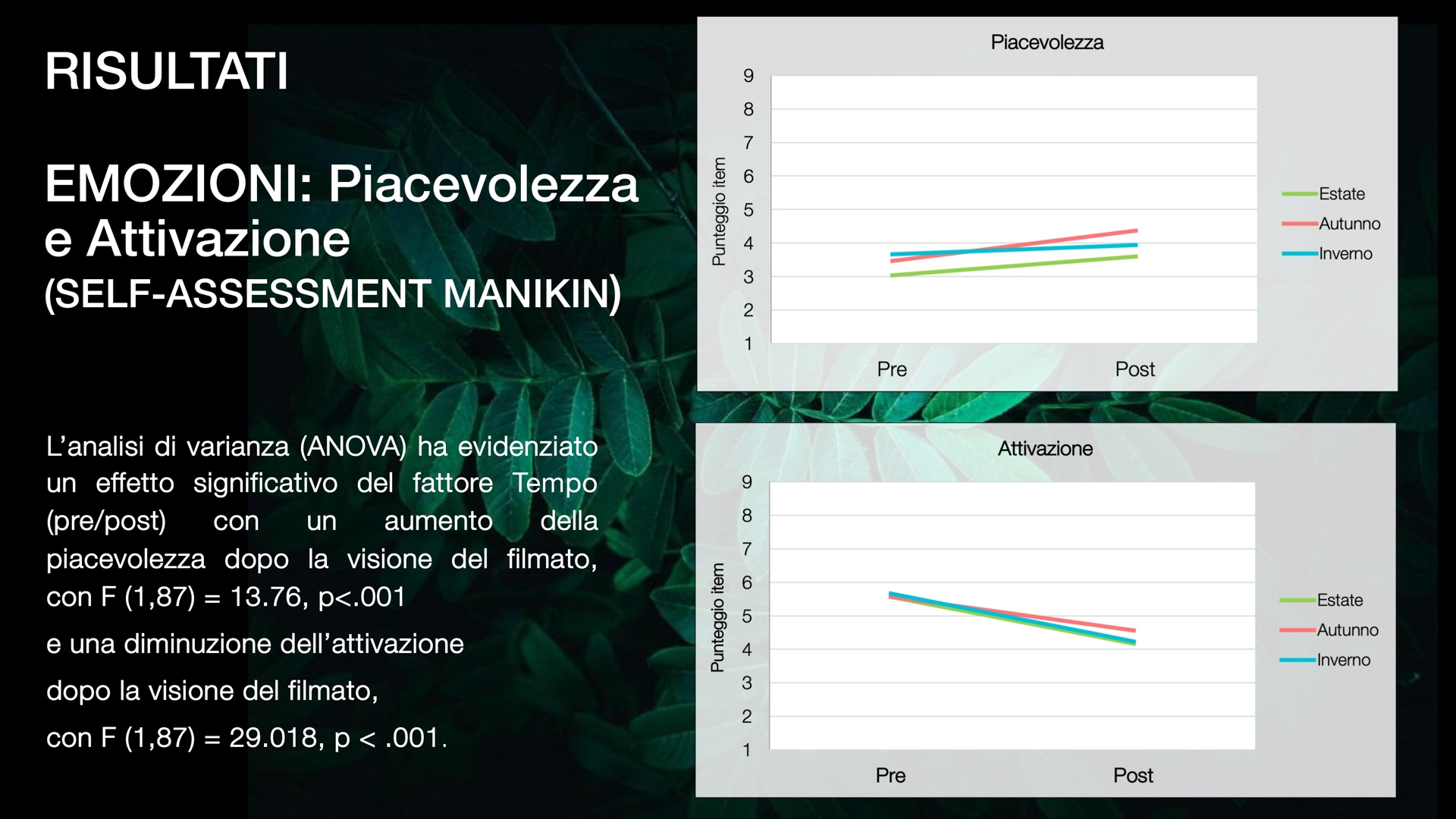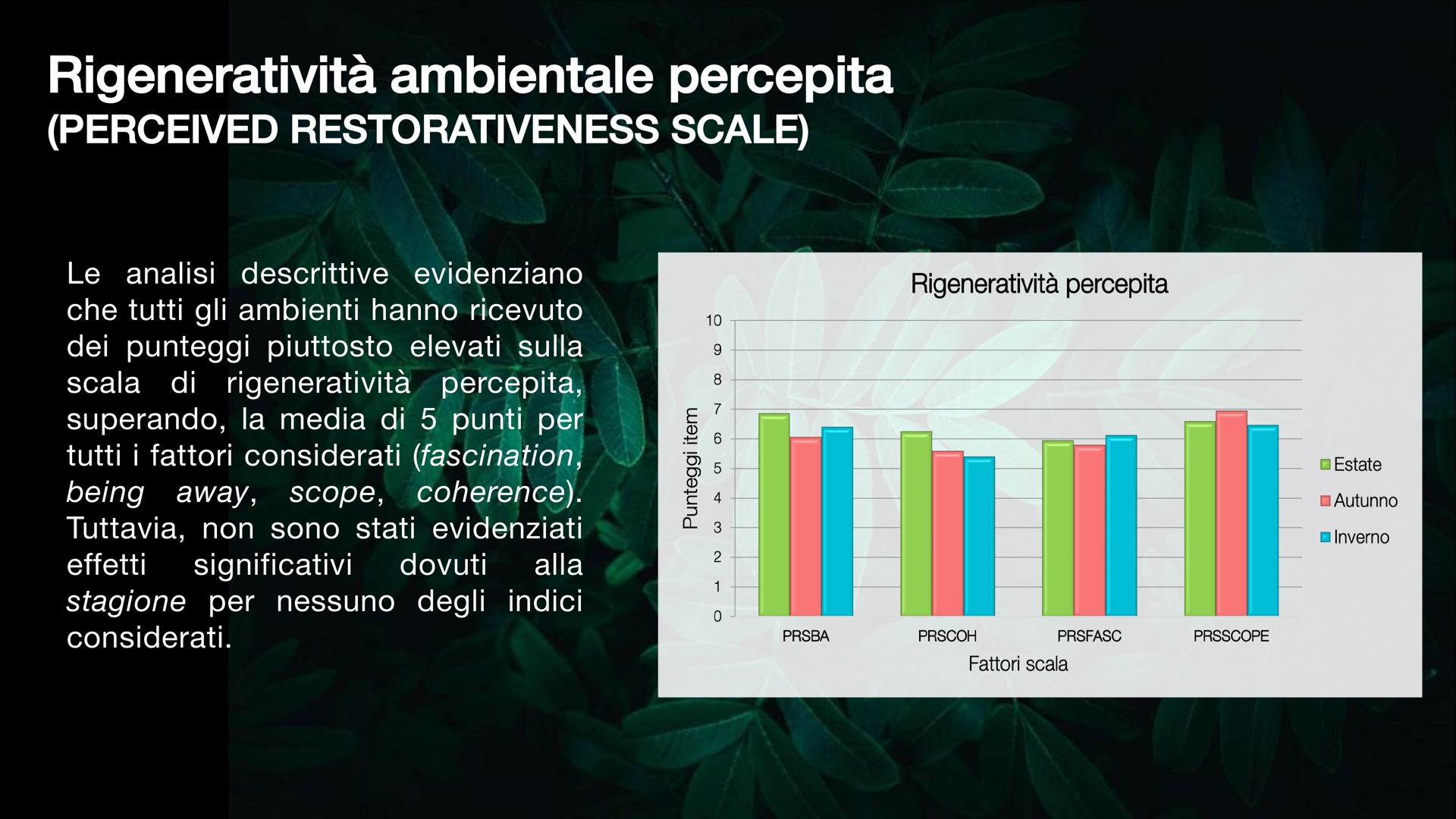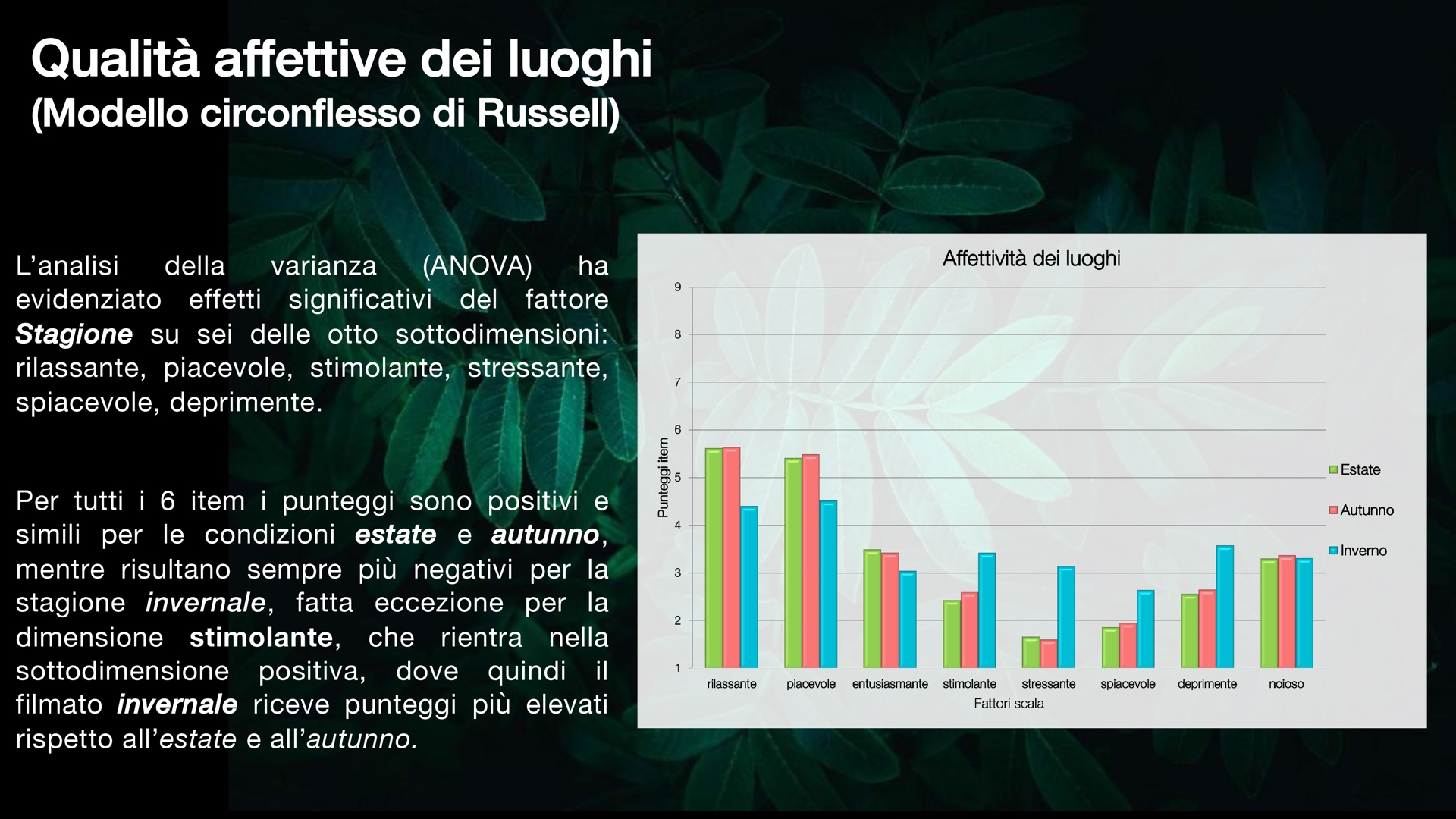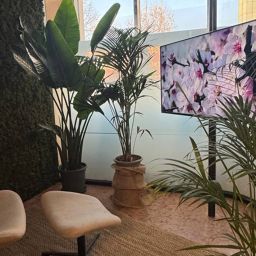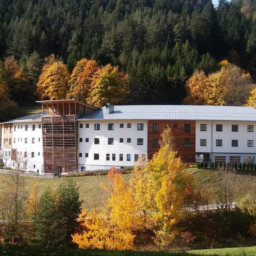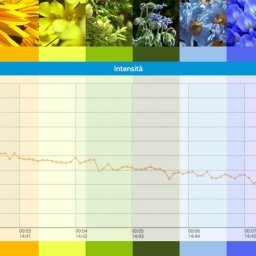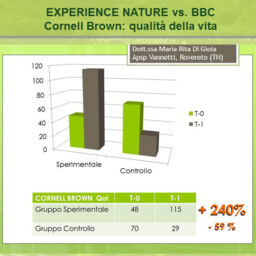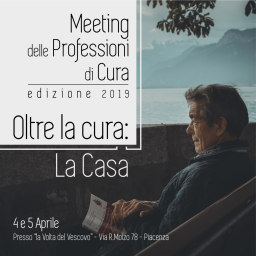EFFECTS ON PERCEIVED REGENERATIVITY AND AFFECTIVE STATES OF IMAGES OF NATURAL LANDSCAPES IN DIFFERENT SEASONS.
Excerpted from: Damian Ottavia, “Effects on perceived regenerativity and affective states of images of natural landscapes in different seasons.”
Master’s Thesis, Master’s Degree Program in Applied Cognitive Psychology.
University of Padua, a.y. 2020-2021. Supervisor: prof. Francesca Pazzaglia.
Purpose and theoretical background
This research was created with the aim of investigating the level of perceived regenerativity, the evaluation of the affective qualities of places and the regenerative effects on the affective state given by viewing natural landscapes, proposed in three different seasons (summer, autumn and winter).
The reference theoretical background is provided by the biophilic approach and the theories on environmental regenerativity, proposed in the field of Environmental Psychology.
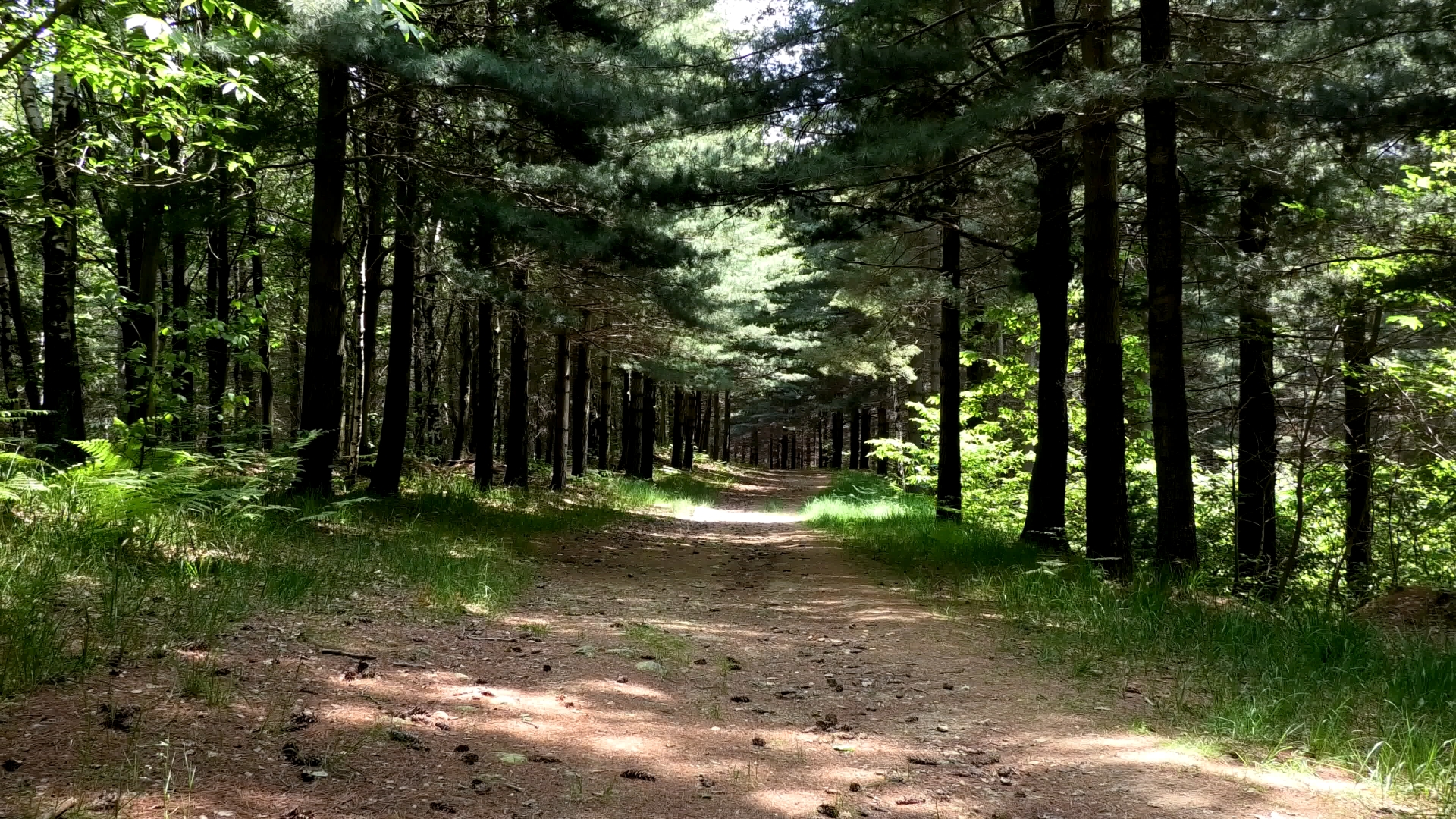
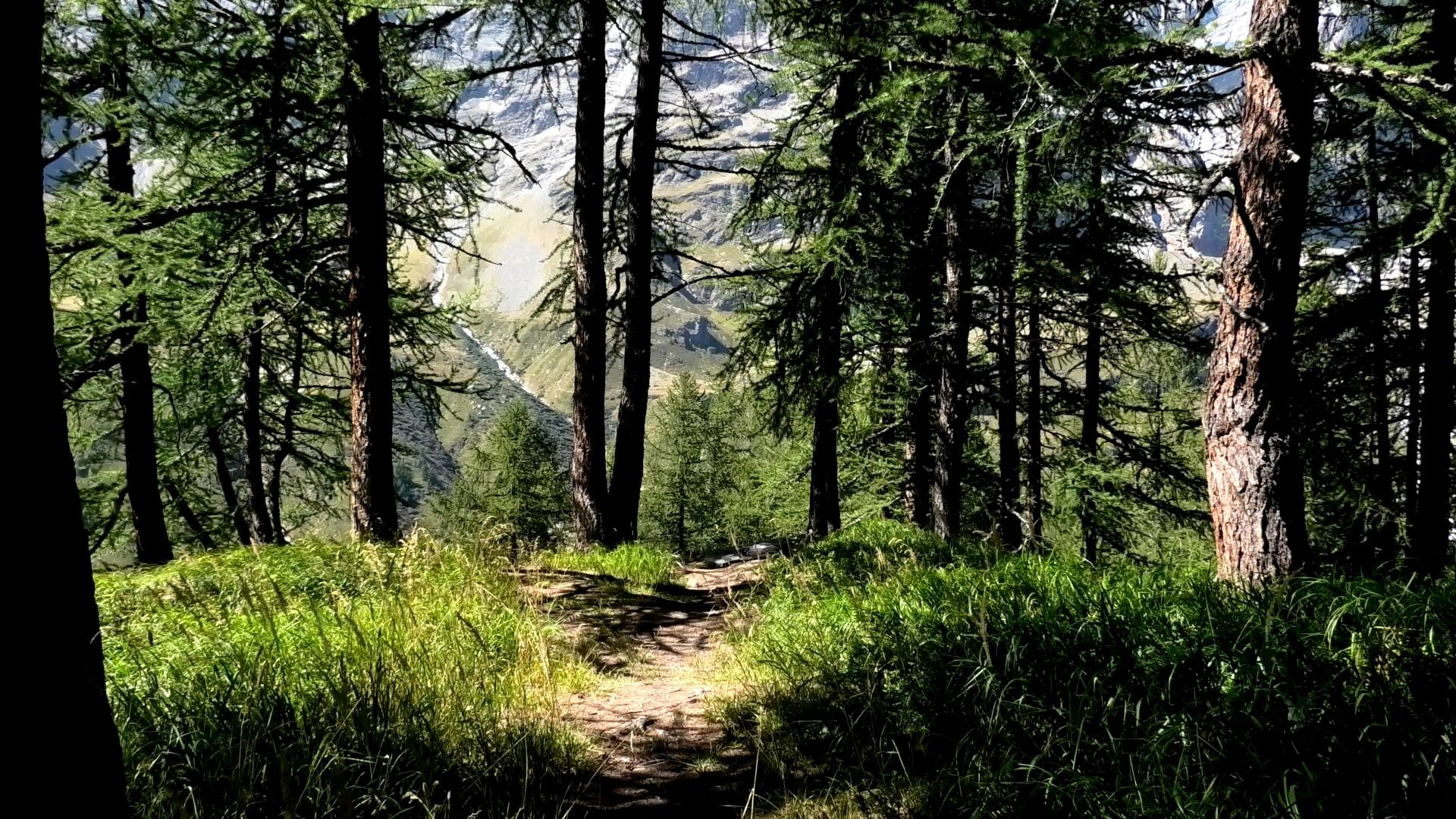
The basis for the biophilic theory is provided by Wilson who, in 1984, proposed the concept of ‘biophilia‘, defined as an innate human tendency to pay attention to the natural world and to feel affiliated with it (Wilson, 1984). The result is an attraction to a type of landscape that contains plants, animals and that appears rich in vital elements.
In 1995, Kaplan presented the construct of regenerative environment, linking it to the concept of environmental stress. Regenerative environments are places that, due to particular environmental characteristics, are able to facilitate psychological and physiological recovery.
The most influential theories on environmental regenerativity are: the Attention Recovery Theory (ART, Kaplan & Kaplan, 1989, 1995) and the Stress Reduction Theory (SRT, Ulrich,1991).
Participants and methodology
Ninety participants aged between 19 and 60 years (M=40, F=50) were recruited, contacted through personal acquaintances and within the university network, and tested electronically via the zoom platform.
After completing two tests (Perceived Stress Scale and Self-Assessment Manikin), the participants watched a film of a forest landscape for a duration of 6′. Thirty of them were shown a sequence of summer forest landscapes, another thirty the same landscapes in autumn and finally the last group was shown a sequence of winter forests during a snowfall. The natural landscapes are all accompanied by the sound of the environment.
The films used are respectively the short sequences of WALK IN WOODS3, AUTUMN WALK and SNOW WOODS by Cristina Fino, published by Alamar Life.
At the end of the viewing, the observers were asked to respond again to the Manikin Self-Assessment, as well as to fill out Russell’s Circumflex Model of Affective Qualities of Places and the Perceived Restorativeness Scale, respectively, for recording the affective qualities and environmental regenerativeness of the presented places.
Assumptions
Assumption 1: change in the subjects’ affective state assessed before and after viewing the film, with an increase in the pleasantness dimension and a decrease in the activation dimension.
Assumption 2: the environments presented in the three seasons differ in affective qualities, and differ in terms of valence and activation.
Finally, we wanted to test whether the three seasons differed in terms of perceived regenerativity.

Results
Affective state before and after viewing the films (Self-Assessment Manikin)
Similarly across the three seasons, viewing the film led to a significant improvement in mood pleasantness, with increased positive emotions, and a reduction in physiological activation, with increased relaxation.
Regenerativity of the places presented (Perceived Restorativeness Scale)
All environments received equally high scores on the perceived regenerativity scale, exceeding the average of 5 points for all factors considered.
The four factors analyzed are those defined by the Attention Regeneration Theory: Fascination, Being Away, Scope, Coherence.
Affective characteristics of the places presented (Russel’s Circumflex Model)
As shown in the graph, the analysis revealed significant differences between the seasons on six of the eight sub-dimensions assessing the three environmental conditions: relaxing, pleasant, stimulating, stressful, unpleasant, depressing. For these six items, the scores are higher (and similar to each other) in summer and autumn than in winter.
The only exception: for the stimulating dimension, winter receives higher scores than summer and autumn.
This can be explained by the fact that the video of winter features a snowfall in progress. The intensity with which the snow falls may have had an activating effect on the observers.
Conclusions
Viewing natural places produced positive effects in terms of:
- increased relaxation
- increased pleasantness, with an increase in the positive affective tone.
All environments were evaluated as very regenerative, regardless of the season presented, and characterised by the properties of
- gathering the spontaneous attention of the observer and the regeneration of direct attention (fascination),
- giving the feeling of moving away from everyday problems (being away),
- giving meaning and coherence to the place (coherence),
- giving a sense of relativity of the elements that characterise the place and suggesting that further information is available and explorable (scope).
Seasons differ in the affective characteristics that characterise them, with summer and autumn having more positive characteristics than winter. The winter landscape is, however, indicated as more activating.
Summary by Ottavia Damian, graduated in Applied Cognitive Psychology, University of Padova.


